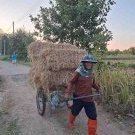Grass removal w/o 'roundup'.
-
Recently Browsing 0 members
- No registered users viewing this page.
-
Topics
-
-
Popular Contributors
-
-
Latest posts...
-
204
Report Thai Woman's Bold Demand for 1 Million Baht Sparks Online Debate
What about the foreigner who gave 150 million baht in sinsod in khon kaen some years ago? He was so sure his wife and her family really loved him.He also gave alot of gold and apartments to her parents. I think he came from US. -
3
-
81
USA Lancet Study: Trump’s Foreign Aid Cuts Could Result in Millions of Preventable Deaths
Which countries? European countries that now have to increase their military spending? That's very unlikely. It may well lead them to decrease their aid budget, rather than increase it. -
43
Feature New Cannabis Curbs Rattle Thai Shop Owners
...and , potential for real estate disaster. think of the commercial property owners who face the potential loss of tenants that will close shop and not pay the rent .. couple that with the hair brain sceme ... tourism industry is gearing up for a mid-year revival, fuelled by the Thai government's new plan to boost domestic travel and spending. The government will cover 50% of accommodation costs, capped at 3,000 baht per night on weekdays and 40% on weekends and public holidays. Additionally, tourists will receive 500-baht coupons for food and shopping at participating businesses. -
3
Cannot access iHerb.com
You are getting the same problem without a VPN and it works with a VPN? So it's hackers? -
21
Tourism Pattaya Prepares for Tourism Revival with New Government Initiative
There is a good chance she will be following in mommy's footsteps!
-
-
Popular in The Pub






.thumb.jpeg.d2d19a66404642fd9ff62d6262fd153e.jpeg)






Recommended Posts
Create an account or sign in to comment
You need to be a member in order to leave a comment
Create an account
Sign up for a new account in our community. It's easy!
Register a new accountSign in
Already have an account? Sign in here.
Sign In Now